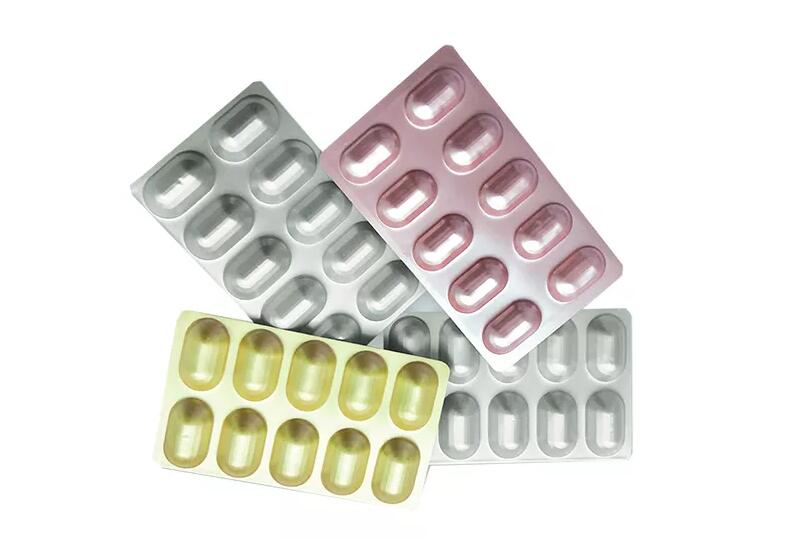The Difference Between Thermoforming and Cold Forming
Introduction
In the world of manufacturing and packaging, two commonly used processes are thermoforming and cold forming. While both techniques have their own unique advantages and applications, it is essential to understand the differences between them in order to make an informed decision for your specific needs. In this article, we will delve into the intricacies of thermoforming and cold forming, exploring their key characteristics, benefits, and areas of application. By the end, you'll have a comprehensive understanding of these processes, helping you determine which one is best suited for your requirements.
Thermoforming: Unveiling Versatility and Efficiency
Thermoforming is a manufacturing process that involves heating a plastic sheet until it becomes pliable, and then shaping it into a desired form using a mold. This method offers a wide range of advantages, making it a popular choice across various industries.
1. Flexibility in Design
Thermoforming provides unparalleled design flexibility, allowing manufacturers to create complex shapes, intricate details, and custom forms. From simple trays to intricate packaging solutions, thermoforming offers limitless possibilities for design customization.
2. Cost-Effective Solution
One of the significant advantages of thermoforming is its cost-effectiveness. The process requires minimal tooling investment compared to other manufacturing methods, such as injection molding. This affordability makes it an attractive choice for small to medium-scale production runs.
3. Rapid Prototyping and Shorter Lead Times
Thermoforming enables rapid prototyping, which is invaluable during the product development stage. The ability to quickly create prototypes and make design iterations accelerates the time-to-market for new products. Additionally, thermoforming boasts shorter lead times compared to other manufacturing techniques, allowing for quicker production cycles.

4. Material Variety
Thermoforming supports a wide range of materials, including various types of plastics like ABS, PET, PVC, and more. This versatility in material selection ensures that manufacturers can choose the most suitable material for their specific product requirements, whether it's durability, clarity, or resistance to chemicals.
Cold Forming: A Marvel of Precision and Durability
While thermoforming has its advantages, cold forming presents its own set of benefits. Cold forming, also known as cold heading or cold forging, is a process where metal is shaped and formed at room temperature without the need for heat.
1. Enhanced Strength and Durability
Cold-formed products exhibit exceptional strength and durability due to the plastic deformation that occurs during the process. The cold working of metal increases its hardness and yield strength, making it suitable for applications where mechanical properties are crucial, such as automotive, construction, and aerospace industries.
2. Material Conservation
Cold forming enables efficient material utilization, reducing waste significantly. By shaping the metal directly into the desired form, cold forming eliminates the need for excess material removal or machining operations, resulting in cost savings and environmental benefits.
3. Complex Geometries
With cold forming, intricate and complex geometries can be achieved. The process allows for the creation of parts with high precision and intricate details that would be challenging to achieve using other manufacturing techniques. This capability is particularly advantageous in industries that require intricate metal components, such as electronics and medical devices.
4. High Production Speeds
Cold forming offers rapid production speeds, making it an ideal choice for high-volume manufacturing. The process can be automated, enabling efficient and continuous production, resulting in shorter lead times and increased productivity.
Choosing the Right Process for Your Needs
Now that we have explored the distinctive features and benefits of thermoforming and cold forming, how do you determine which process is best suited for your requirements? Here are some key considerations:
Product Complexity: If your design calls for intricate shapes, unique details, or customization, thermoforming might be the better choice due to its design flexibility.
Material Requirements: Thermoforming provides a broader range of material options, especially when working with plastics. If you require specific material properties or need to choose from a wide selection, thermoforming is likely the optimal solution.
Strength and Durability: When mechanical strength and durability are critical factors, cold forming excels. If you need metal components with exceptional strength and hardness, cold forming is the way to go.
Production Volume: If you require high-volume production with short lead times, cold forming's rapid production speeds and automation capabilities make it an efficient choice.
Ultimately, the decision between thermoforming and cold forming depends on your specific needs, product requirements, and industry. Consulting with experts in each process can provide valuable insights and help you make an informed decision that aligns with your goals.
Conclusion
In summary, thermoforming and cold forming are two distinct manufacturing processes with their own unique benefits. Thermoforming offers design flexibility, cost-effectiveness, rapid prototyping, and material versatility. On the other hand, cold forming packaging excels in strength and durability, material conservation, complex geometries, and high production speeds.
By understanding the differences between these processes and considering your specific needs, you can confidently choose the right method to achieve optimal results for your products. Whether you require intricate plastic packaging or durable metal components, the choice between thermoforming and cold forming lies in your hands.
Remember, each process has its own merits and areas of application. By leveraging this knowledge, you can unlock the full potential of your manufacturing and packaging endeavors.



